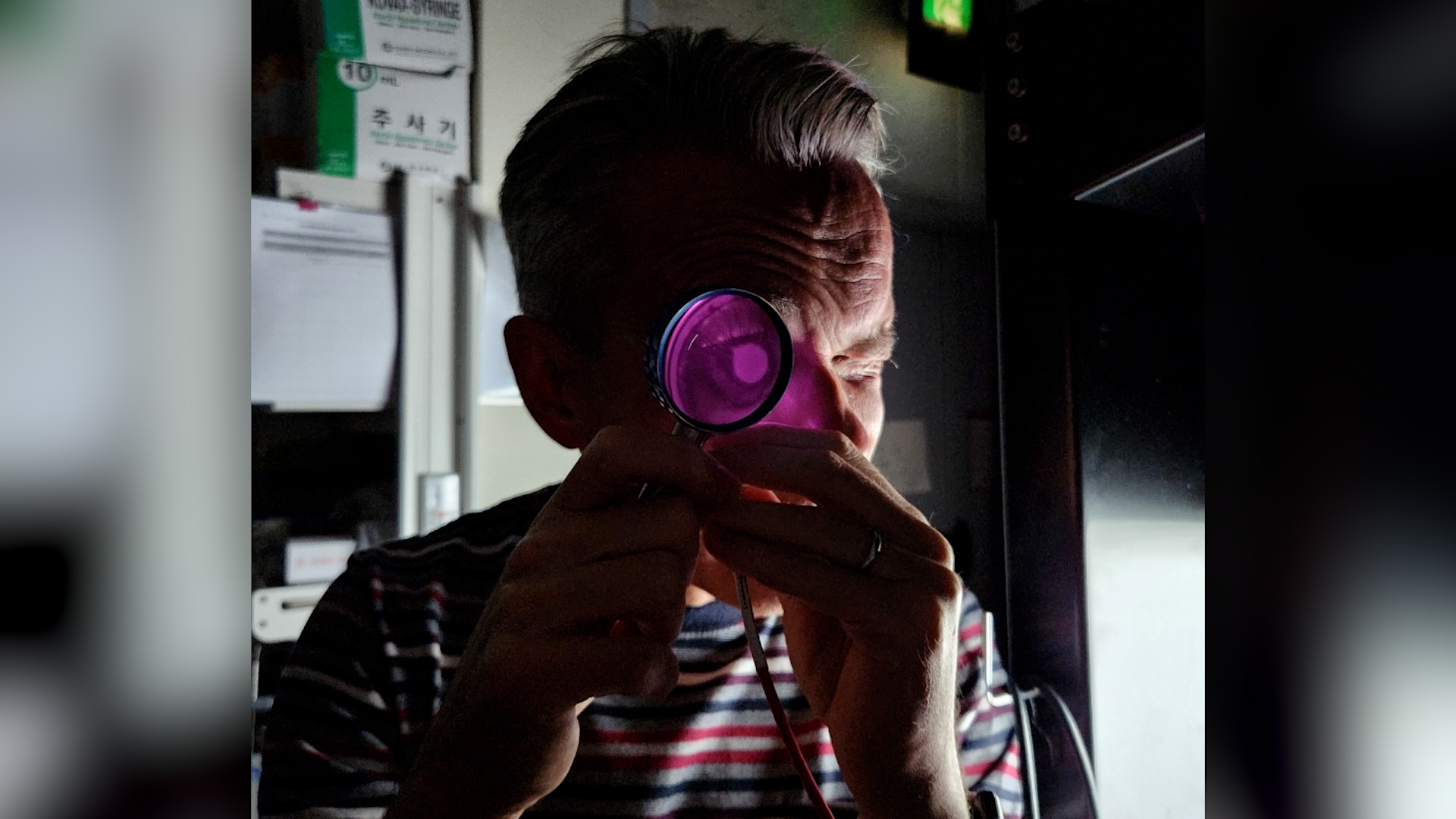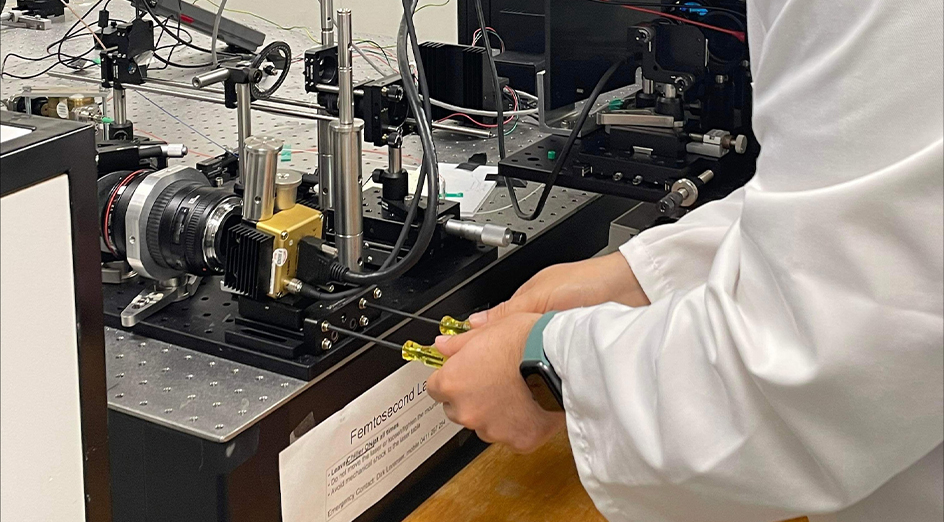A collaboration between The University of Western Australia and Yonsei University in South Korea has developed a revolutionary method of diagnosing diabetes and hypertension, with major potential for precise, swift and affordable early detection.
“This pioneering research not only enables speedy and straightforward identification of diabetes and hypertension but also holds potential for earlier and more effective treatments.”
Professor Barry Cense, UWA School of Engineering
Researchers discovered a way to use polarised light to detect changes in patients’ blood vessel walls that are associated with diabetes and hypertension, using a device similar to optical scanners often found in eye clinics.
 Image: Professor Barry Cense from UWA School of Engineering with ophthalmic lens.
Image: Professor Barry Cense from UWA School of Engineering with ophthalmic lens.
Professor Barry Cense from UWA’s School of Engineering, currently visiting Yonsei University in South Korea, said the process takes just a few seconds per eye, with results available almost instantly, creating opportunities for improved intervention.
“This pioneering research not only enables speedy and straightforward identification of diabetes and hypertension but also holds potential for earlier and more effective treatments,” Professor Cense said.
“By harnessing the power of polarised light, this research deepens our understanding of these widespread health conditions, ultimately benefiting those affected.”
 Image: Dr Hadi Afsharam, UWA Centre for Medical Research operating the PS-OCT system.
Image: Dr Hadi Afsharam, UWA Centre for Medical Research operating the PS-OCT system.
Diabetes and hypertension each cause different, distinctive alterations to blood vessel walls – both of which can be detected by using polarised light to directly assess the health of the walls.
This innovative approach sets itself apart from traditional diabetes tests that require fasting and blood samples, like oral glucose tolerance testing, and common hypertension detection methods, such as blood pressure monitors.

Dr Hadi Afsharan from UWA’s Medical School said the implications of the findings also extended to heart-related diseases like coronary artery disease (CAD).
“Instead of uncomfortable and radiation-intensive methods, we’re exploring a new painless and safe approach, making regular check-ups hassle-free,” Dr Afsharan said.
“In the future, using polarised light for heart problem diagnosis could revolutionise how we detect and treat conditions like coronary artery disease, offering more effective and patient-friendly screening and treatment options.”








